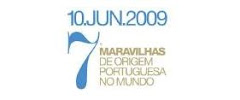
Born in Porto, she was descended from an aristocratic family from her mother side. Her surname comes from her Danish merchant great-grandfather. Andresen was raised a Christian and attended schools in her hometown and Lisbon, where she moved after marrying lawyer and politician Francisco Sousa Tavares. They had five children, among them journalist and best-selling author Miguel Sousa Tavares. One of their daughters is a missionary.
Andresen distinguished herself as a storyteller with Contos Exemplares(Exemplary Tales),"Historias da Terra e do Mar"(Stories of the Land and the Sea),a wide range of children's books,such as:A Menina do Mar(The Sea Girl),O Cavaleiro da Dinamarca(The Knight from Danmark),A Floresta(The Forrest),O Rapaz de Bronze(The Bronze Boy)etc,and several poetry books and anthologies,including:Poesia,Dual, Livro Sexto,Coral,Dia do Mar,No Tempo Dividido,Grades,O Nome das Coisas,As Ilhas,Antologia,Geografia,Navegaçoes, O Buzio de Cos etc.
"Poetry," she explained, "is my understanding with the universe, my way of relating to things, my participation in reality, my encounter with voices and images. That is why the poem speaks not of an ideal life but of a concrete one: the angle of a window, the resonance of streets, cities and rooms, the shade cast by a wall, a sudden face, the stars’ silence, distance and brightness, the night’s breathing, the scent of the linden and of oregano."
Frequent themes in her work include the maritime themes (sea and beaches),the Greek culture and civilization, and the concept of freedom and justice. Sophia lived in Oporto(Porto),Praia da Granja(a seaside beach in Vila Nova de Gaia )and Lisbon(Lisboa). In an interview given to an arts and culture portuguese magazine Andresen considered herself a mix of north and south, embracing Nordic Europe and southern/Mediterranean Europe. Her work passionately reflects her sensitivity. She evoked and dedicated some of her poems to Camoes, Fernando Pessoa ,Cecilia Meireles, Catarina Eufemea ,etc. Eloquently wrote of Brazil,Portugal,Africa,Italy and most frequently Greece and the Greek isles, it’s mythology, natural wonder and the search of justice. During her lifetime received several awards and translated Shakespeare and Dante. Sophia spend her latter days in Lisbon(Lisboa)in her flat in Graça quarter, near Castelo de Sao Jorge(St.George Castle)in historic Lisbon. Andresen died in Lisbon on July 2, 2004. A school in the municipality of Oeiras (Portugal) bears her name in her honor. Most of Sophia Andresen work has been translated into several languages.
(http://en.wikipedia.org/wiki/Sophia_de_Mello_Breyner_Andresen)
 1926 - Praça da Ribeira
1926 - Praça da Ribeira

 Here you have one interesting game that can help you to learn Portuguese. Try it, I'm sure you will enjoy...
Here you have one interesting game that can help you to learn Portuguese. Try it, I'm sure you will enjoy...




